We Tried Out the New Apple Watch Series 8. Here's What We Thought.
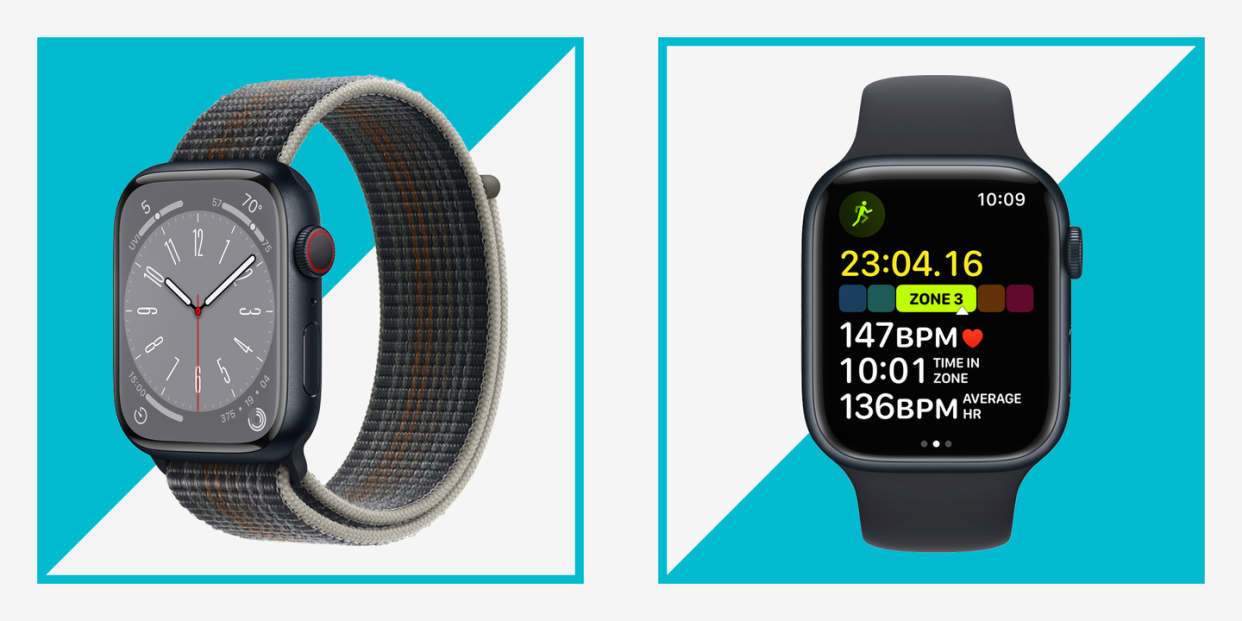
"Hearst Magazines and Yahoo may earn commission or revenue on some items through the links below."
APPLE'S LATEST SMARTWATCH commanded almost all of the attention at the company's annual fall Keynote event, as new adventure-ready features and a rugged design of the new Apple Watch Ultra brought an entirely new focus to the company's wearable output. That's not the smartwatch we're talking about right now, however. The most recent update to the company's best-selling smartwatch line, the Apple Watch Series 8, got here first.
The Series 8 is put in a bit of an awkward spot. Yes, the flashy new Ultra has the momentum going out of Apple's rough and tumble presentation, but that doesn't mean the Series 8 was just a second thought. I gave the Series 8 a wear test for a just under a week after the big reveal at the Keynote, and I found that consistency ruled with the new device.
The device doesn't boast as many new sensors or blockbuster features as the Ultra, but it does have everything that has made the previous generations of the Apple Watch the bestselling smartwatch on the market—and more improvements to make the Series 8 another step forward for Apple's general smartwatch category.
Apple Watch Series 8 Quick Stats
●Redesigned Back Case
●New Skin Temperature Sensor
●Crash Detection
●Low Power Mode for extended battery life
●Health features like HR tracking, ECG readings, Blood Oxygen levels, and more
●7 Colors: Midnight, Starlight, Gold, Graphite, Silver, Space Black, (PRODUCT)RED
●Starting at $399
Some Old, Some New
If you've worn any model of the Apple Watch from the past few generations (especially last year's reworked Series 7), you won't be surprised by anything about the wearable's design. The Series 8 has the same sleek aluminum casing (in 41mm and 45mm sizes), with a smooth, responsive touchscreen and Digital Crown for easy navigation. Along with the design, the Series 8 boasts all of the various sensors and features introduced over the years in previous models, from continuous heart monitoring, ECG app and fall monitoring, the blood oxygen sensor, and more, making it a valuable tool for anyone interested in monitoring and collecting health data.
There is a new feature to add to the list: a new two-sensor design that allows the wearer to track their skin temperature during sleep. Apple says the measure is a useful indicator of overall body temperature, which can be used to detect changes in the baseline over a period of time to detect changes in your routine and even illness. Unfortunately, my unit hadn't logged enough data to provide a baseline at the time of review, so I can't say how it works for one way or another. I can't test the real focus of this new sensor, either; the biggest update for the Series 8's health suite is menstrual tracking, including ovulation data for family planning. Since I do not menstruate or ovulate, the benefits are lost to me. For those who do, however, Apple emphasized the company's commitment to data security and privacy in its Keynote and press materials.
I'm more thankful that I didn't have the occasion to test the other new major health and safety update. Crash Detection, enabled by tweaks to the gyroscope, accelerometer, and other tools all working in tandem, stands to serve as a first line of alarm in the event of a major car accident. Apple says that the Watch's AI has been trained to recognize the unique forces of a crash, then kicks into a protocol that contacts local first responders and emergency contacts if the wearer doesn't override a 10 second countdown.
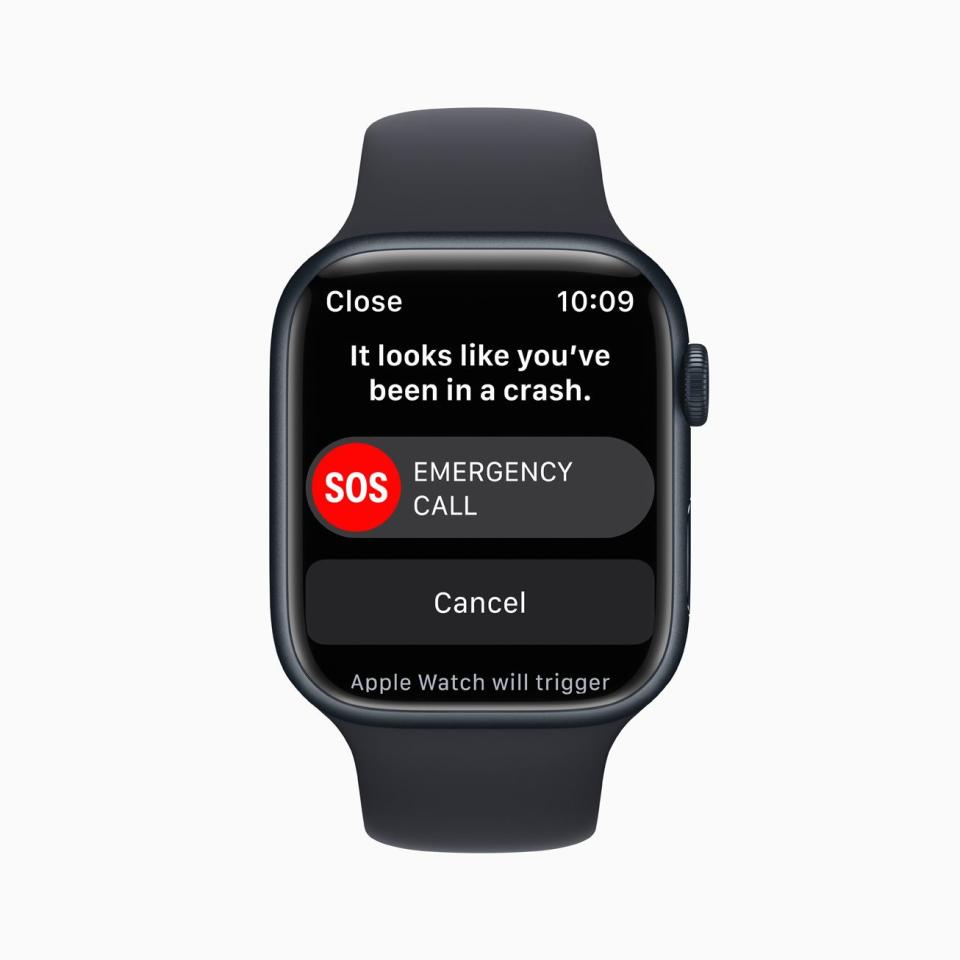
The new iPhone 14 models have the same capabilities, but since the Watch is attached to your wrist, you might be more likely to have access to the tool in the event of an emergency.
There is one more smaller, simpler update will be much more likely to be used by all types of Apple Watch wearers: Low Power Mode. During my testing, I was able to maintain the "all-day" battery estimates Apple advertises (usually pegged to 18-hours, although that will depend on usage), but I did need to extend the time between charges with a busy week at work. I popped into Low Power Mode at about 22 percent around noon, then eked out the rest of the day without the battery dying by the time I got it to a charger at 8pm. Apple estimates the full battery range with Low Power Mode to be 36 hours. I didn't get quite that far, but I had no issues on Low Power Mode. To compensate for the dip in output, some features like the Always-On display, heart health notifications, and auto-tracking for workouts are disabled.
watchOS 9 In Full Effect
Along with the new hardware, this week marks the release of Apple's latest software for its wearables, watchOS9, which is now available for all Apple Watch devices from Series 4 on. Here's where things get exciting, especially if you're less concerned with passive health monitoring and more focused on moving your body and getting active.
Chief among the updates is an overhaul to the Workout app, where users track their exercise and view data as they train. The app has grown over the years, adding exercise types and features here and there, but watchOS9 bring a specific focus to updating some of the key training modes.
I used mostly the traditional strength training mode, just given where I'm at in my own training split. There weren't big-time upgrades there, besides being able to set time and calorie goals for each session, or create a custom routine with work and rest periods. Slide down to the HIIT workout mode, however, and there's plenty of tools at your disposal. There are a suite of new preset protocols available on the docket, divvied up by different interval splits and session duration times. You can even create your own custom template with a few finger swipes and taps, tweaking the time depending on the protocol you're aiming to train without getting your phone involved and introducing more distractions to your workout.
But the real overhaul came to the outdoor running mode. Along with preset workouts and new individual session settings that allow you to specify time, distance, pace, and calorie burn, there's a wide range of new data points available for runners to know just about everything about their stride as they're training. Measures like Vertical Oscillation, Stride Length, and Ground Contact Time can slot directly onto the display, allowing you to make adjustments on the fly. I didn't love this experience, but I'm set in my ways—for less confident runners, these tools might be used to improve their stride.
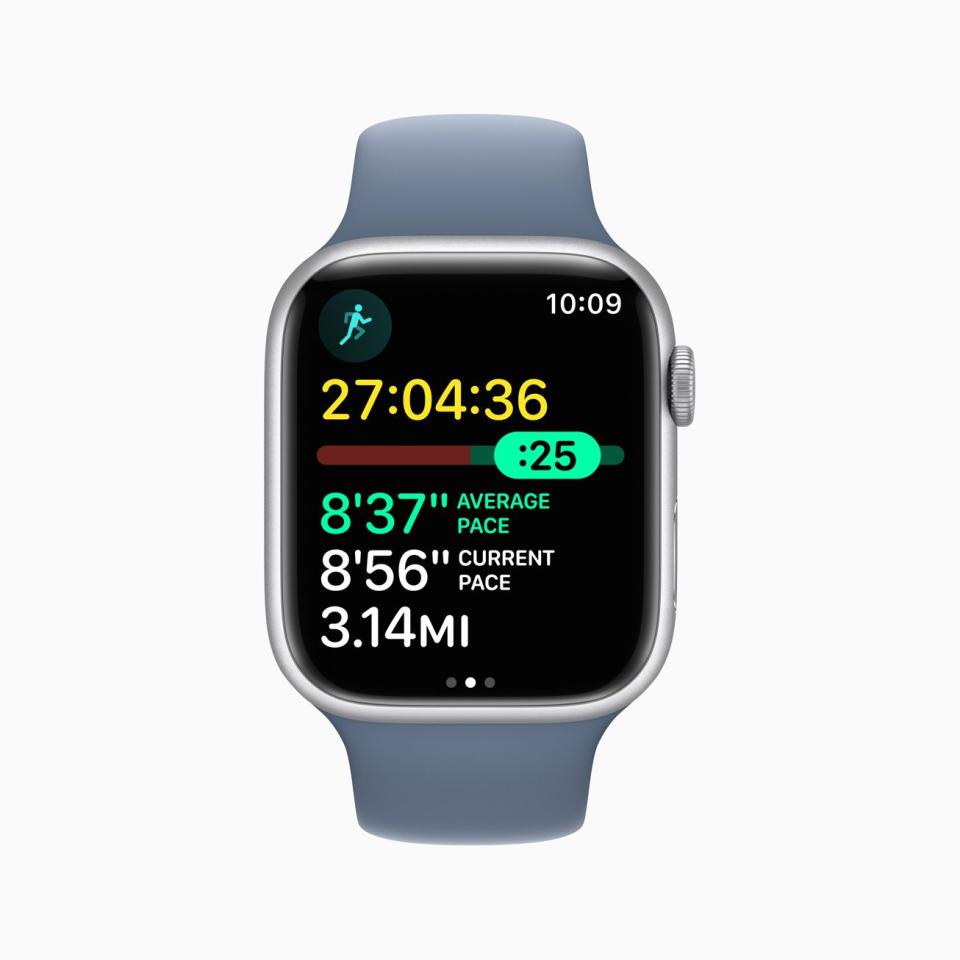
I was most intrigued by features that are common in other fitness wearables, but now make their way to the Apple Watch. The Apple Watch is my favorite wearable to use for road running races, since the display is bright, so simple to navigate, and I love keeping track of my progress with the rolling pace feature. But the previous generations didn't have the ability to track splits during training sessions, which was massively vexing when it came time to do track workouts, speed intervals, or repeats. Even the most basic sports watch generally has that feature, if nothing else. I often found myself reaching for another device just for race training, even though the Apple Watch is my typical everyday wear when I'm not testing another smartwatch. Now, watchOS 8 has finally introduced segments and splits. The function is simple to use, and you get plenty of data within each section.
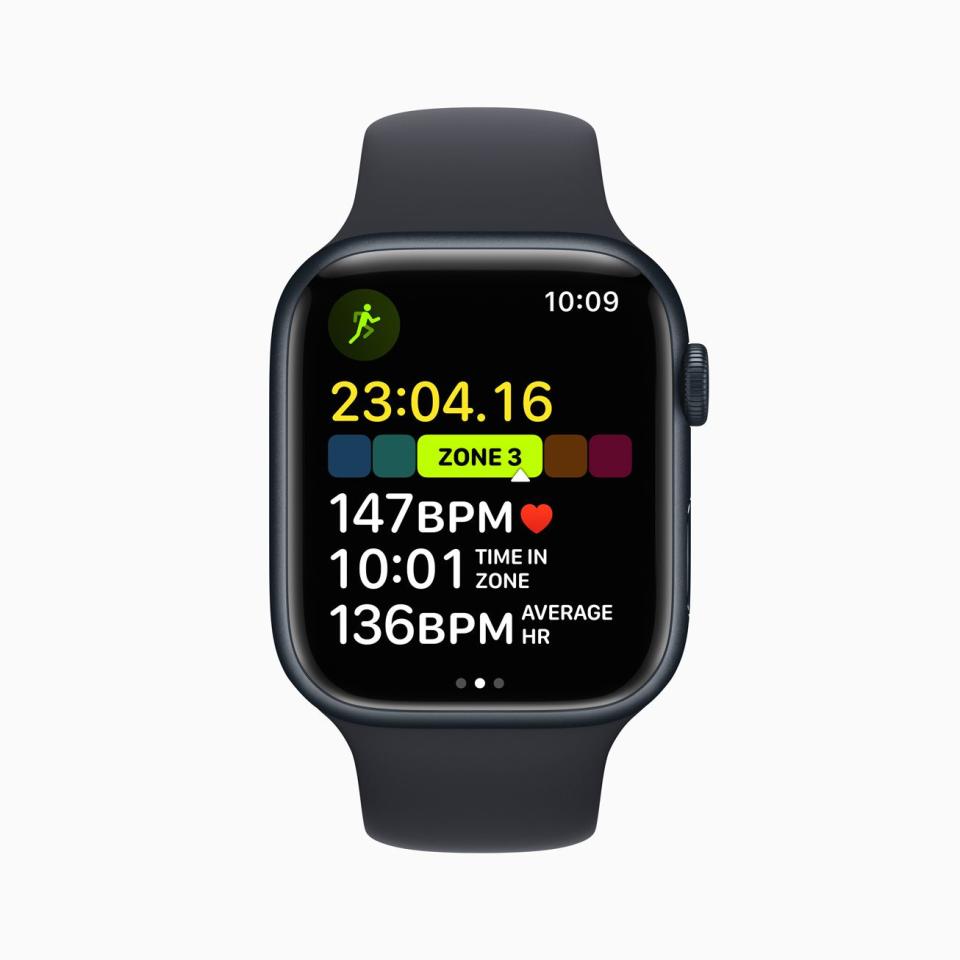
I'm also excited about the ability to monitor heart rate zones, which is a common tool to gauge the intensity of a given workout and help to design training plans for athletes depending on their goals (for more info on the practice, check out this explainer). Having this information right on the display—it's available as a second screen as you swipe up from the bottom of the Watch—is super simple and takes the guesswork out of the process. I also found the readout easier to understand than some other smartwatch displays that track Heart Rate Zones—and if you're a real stickler on your particular ideal Zone ranges, you can manually set the parameters to your choosing.
Two of the coolest running features announced with the OS were unfortunately not quite ready for release during my testing period. Automatic Track Detection uses Maps data to determine when the wearer is at a track doing a running workout, then adjusts to log laps and pace on the oval. I have run far too many time trials and wound up with wonky data from my GPS tracking, using Apple products and others, so if this feature winds up working as advertised when it launches (slated for later this year), it could be a game-changer for runners like me. Also pegged for release via software update later in the year is Race Route, which will allow users to record running paths (also on Cycling and Wheelchair Run Pace, too), then repeat them, to try to improve on their best efforts. All of these features finally make the Apple Watch just as appealing to use as a training tool as it is for races—just in time for the bulk of my prep for the New York City Marathon later this year. You could say that I'm excited to get even more miles logged with the Series 8. And if I want to level up to new types of challenges, the Watch now has Multisport mode for automatic tracking for triathlons and similar events.
The Watch Won't Let You Get Lost
Also improved is the compass app. You can do more than just orient using there tool—now you can identify important places to remember along your route and drop yourself a trail of digital breadcrumbs to retrace your steps.
Using the tools, dubbed “Waypoints” and “Backtrack” is as simple as pulling up the compass app (just make sure that you have Precise location enabled in the compass app’s settings on your iPhone before using). The icon on the bottom left corner of the screen drops a Waypoint; while you’ll need to tap the footprint icon on the bottom right corner at the start of your walk (or wherever you choose to start recording your steps) to initiate Backtrack. Once you’ve gone as far as you’d like, give the icon another tap to reverse course and follow the onscreen guidance to go back where you came. I littered my neighborhood with Waypoints, which are easy to return to and use to navigate—this will be a great tool for campsites and meetup points. Backtrack was a little trickier for me to get a handle on, mostly just due to my inexperience with following anything but the simplest turn-by-turn directions. I’ve used similar tools in other GPS watches, and there’s always a learning curve. As a directionally-challenged person, I’m glad to have these features on my wrist and I feel like they’ll be a big help to me.
The OS also includes some other updates to its health capabilities, like Sleep Insights, a new AFib History log for people who have the condition, and a medications tool that can help users to manage their schedules and stay on track with their dosage. The Sleep updates are similar to other trackers I’ve used, providing a breakdown of data from each night’s rest (think REM, Core, and Deep sleep) and showing trends over time (which I wasn’t able to take advantage of yet since I haven’t tracked enough sleep on the device). My unscientific takeaway from the granular night-to-night data: I need more sleep.
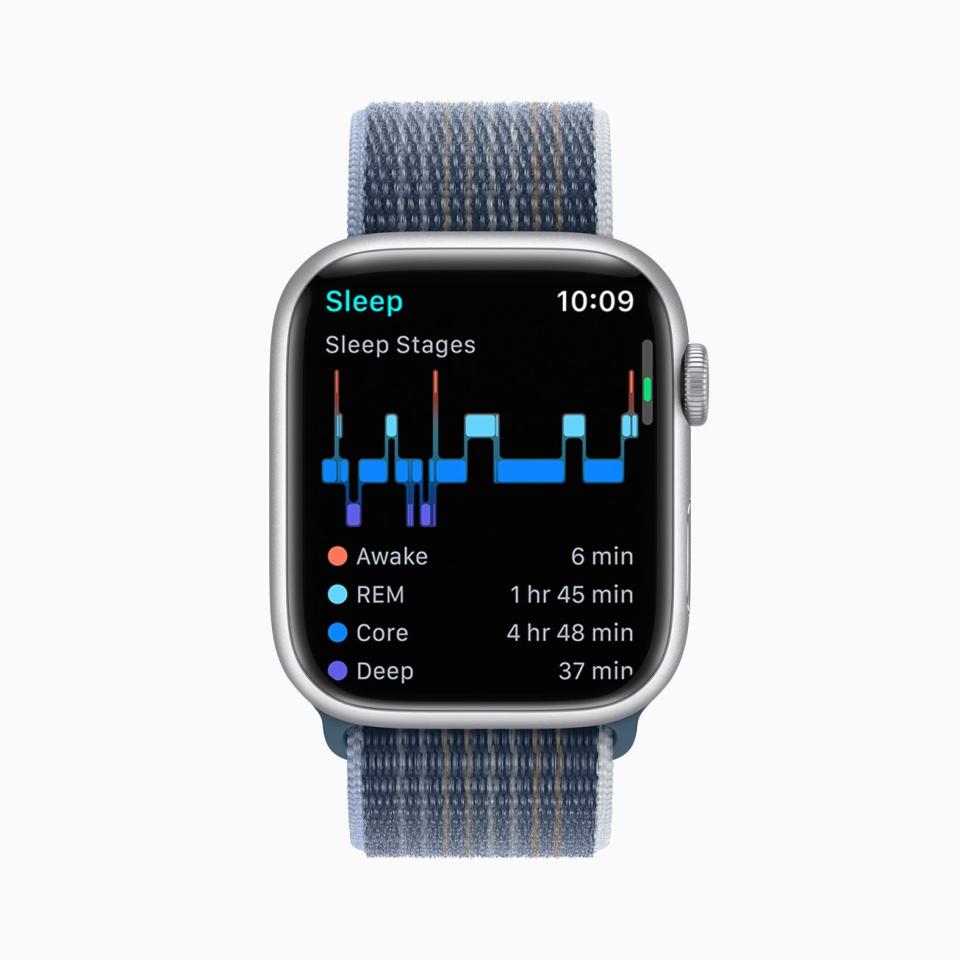
I wasn’t able to dive deep into the other features, since I don’t have AFib and don’t currently take any meds, but they’re clearly aimed at the type of user who has come to depend on the Watch as a digital health assistant.
Should You Upgrade to the Apple Watch Series 8?
The big question—especially with the Apple Watch Ultra release looming on September 23 for the true adventure fanatics—is if the Series 8 is worth the upgrade. For me, the answer comes down to the use case and what you want out of your wearable.
If you want access to the most recent Apple tech, with its most powerful health sensors, safety features, and battery life, yes, especially if your current device is more than a few years old or you've never owned an Apple Watch. I always advise that people who want to buy a new device opt for the newest available if they're not planning to replace it on an annual basis, since they'll ultimately be able to get the most use out of the most recent update since those devices will likely accept software updates for the longest period.
If you don't think you need all the bells and whistles but you do want a new device, this year's second-gen Apple Watch SE is right there for you. You won't get the top line health features (blood oxygen and ECG) or the Always-On screen, but you'll still get a fast new device that runs watchOS9 like a dream—starting at $150 less for the base model.
If you have an Apple Watch that's only one or two years old, however, you might want to sit this release out (or wait for the super-powered Ultra if its adventure specs are more appealing to you). Just make sure to install watchOS9 on your current device, and you'll have access to all of the fitness tracking and navigation features that make it one of the most exciting software updates in recent memory.
You Might Also Like

